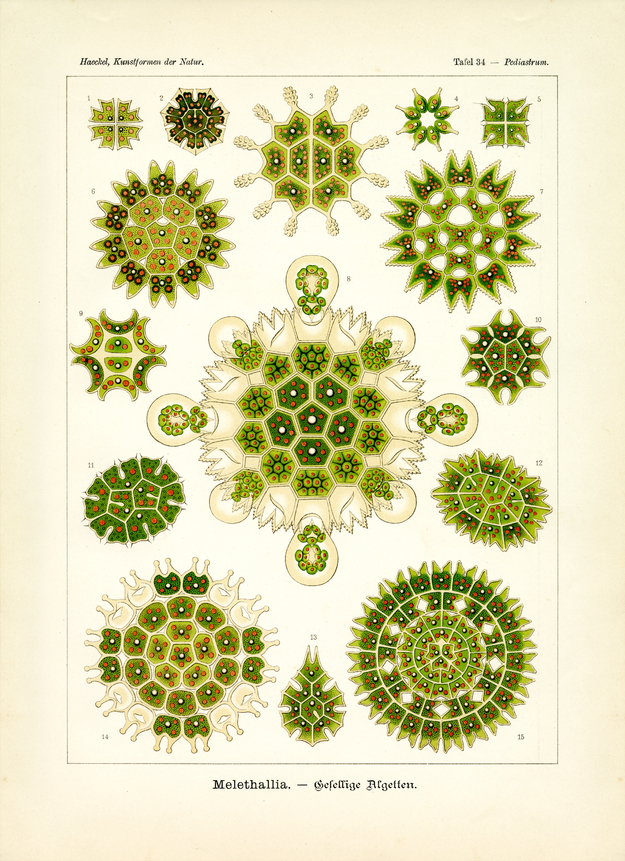Cownobiotica are small Protophyta belonging to the class of Zoosporata (so-called ‘unicellular algae with ‘swarm spores’, Zoosporata) living in freshwater; they are distinguished from other Zoosporata by their green cells that do not live individually (Monobia, closely related Protococcae) but form permanent cell unions (Coenobia). In the kind of Pediastrum with numerous species living in freshwater the convivial cells are always structured in the delicate form of a shallow disc, in one single layer. Inside the green cell substance a shiny protein crystal (Pyrenoid) is always available as well as several small nuclei (here in reddish colouration). Reproduction usually takes place with the help of ‘swarm spores’ that originate in a cell in a fixed number (4, 8, 16, 32); the cell wall bursts open in one place, and out of this ‘birth cleft’ of the mother cell emerges a gelatinous bubble into which flexible daughter cells pass over (fig. 8); they organize within the bubble already to form a new disc. In most species the disc is composed of 8 or 16 cells; more rarely of 4, 32 or 64. Cells at the border usually differ from cells in the core by the formation of lopes, spices or prickles that are most diversely shaped in specific species.
Translation of the original German introduction by Ernst Haeckel:
Division of Protophyta (Urpflanzen); - class of Zoosporata (Algetten); - subclass of Coenobiotica (Melethallien); - family of Hydrodictyea (Wassernetzchen).
Translation by VR Translators Bangalore
This is one of the 100 pop science biology illustrations that were published from 1899 – 1904 in Leipzig by Ernst Haeckel through Verlag des Bibliographischen Instituts.
We've scanned the original lithography at 1200dpi on the Epson A3 scanner of A3 scanner huren. You can download a 400dpi JPEG here.
